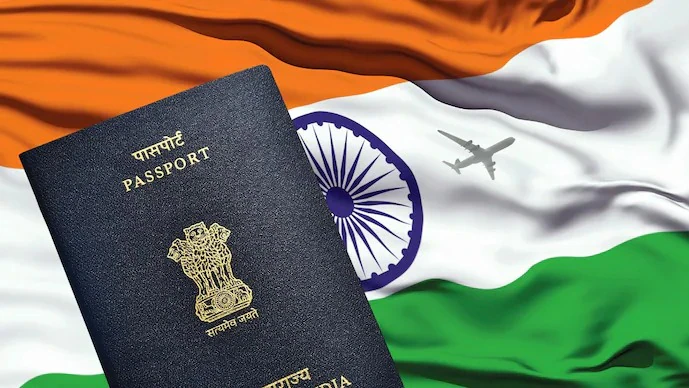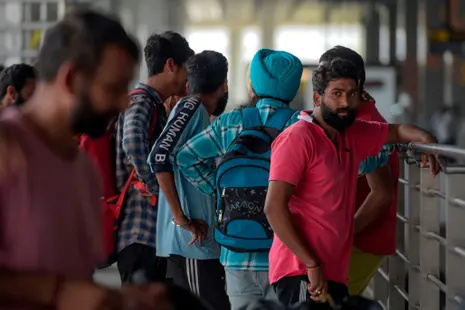- There is no age requirement for Priya Living communities, and you don’t have to be Indian to live there
A report in nytimes.com speaks about how Indian seniors have found a community steeped in Indian culture in California. When Arun Paul’s parents were in their 70s, he began searching for a duplex in his neighborhood in the Bay Area where they could live. The plan was that Paul would be close by, but his parents would also share the duplex with their friends, another older couple.
It was important to Paul that his parents, who emigrated from India in the 1960s, would have other Indian people to be around, especially as they aged. “Growing up, I could always feel that there was something they left behind, like a really important piece of who they were,” Paul told nytimes.com.
Word of the duplex plan spread among other members of the Indian community, and Paul started to think that it could be something bigger. “I started getting phone calls from aunties, and they would say, ‘I heard you’re building a community. We really need something like this,’” he said. “That’s when it just hit me. There’s a lot of people out there that really felt this same way.”
Paul already had a background working in real estate development. So instead of creating a home for just two couples, in 2012, he began Priya Living — an elder-living community that centers Indian culture through its activities, design, food and residents themselves. Priya Living started off with just one 26-unit location in Santa Clara, Calif., where Paul’s parents moved in. But now, it has four locations in California and is opening its first location in India near New Delhi on November 8. Paul also said that the company has acquired land for future development in Michigan and Texas. In total, Priya Living has over 530 residents in the United States.
The average age of a Priya Living resident is 61, but there are residents in the 35 to 50 range too
Living units are condo-style residences, each with one or two bedrooms, and rents range from $2,000 to $3,000 a month
But there is no age requirement for Priya Living communities, and you don’t have to be Indian to live there. The average age of a Priya Living resident is 61, but there are residents in the 35 to 50 range too, Paul said. Living units are condo-style residences, each with one or two bedrooms, and rents range from $2,000 to $3,000 a month.
Between 2010 and 2020, the Indian American population that identifies their race as solely Indian expanded by more than 50 percent to nearly 4.4 million, according to census data. While the population is growing, it can still be hard for members to find a sense of community or feel at home at times in the United States, especially as they age. Priya Living aims to offer a solution to that.
A 2009 Times article on the loneliness that older immigrants face, titled “Invisible Immigrants, Old and Left With ‘Nobody to Talk To,’” also inspired Paul’s vision. He said he kept a print copy of the article in his office when he first opened Priya Living, “and would reread it often for motivation, to help remind myself what this is all about, and why it’s worth fighting for,” he said.
After Geetha Iyengar’s husband died in 2020, she moved in with her son’s family in San Carlos, Calif. Covid made life complicated, and Iyengar, 78, struggled to stay active — the home was in a hilly area, so going for walks wasn’t an option. “You’re kind of physically, mentally stuck in one place,” she said.
Her son helped her find Priya Living, but she was nervous to make the move. “I’m in my 70s. I came thinking, ‘Oh my gosh, I’m old now. I don’t want to start life all over by myself,’” she said. But it’s a decision Iyengar is happy she made.
Now, she walks one mile every day by completing 16 laps in the facility’s courtyard. And there are many aspects of living there that remind her of life in India. Iyengar had first moved to the United States in 1967 from Bangalore, India, to attend the University of Minnesota as an engineering student.
“There are people from all parts of India here — from Hyderabad, Karnataka, Punjab, Kerala, Tamil Nadu, Bengal, Rajasthan,” she said. “Every home has its own way of cooking or spices. So when you’re walking around here, you sense the different aromas, you come home feeling hungry.” Even the plants in the courtyard, such as chili and jasmine, provide a similar kind of comfort for Iyengar.
At times, there can be downsides to moving into a place of strangers, even if there’s shared heritage. Iyengar said she has had to learn how to cope with different personality types. “We all have to make adjustments,” she said. “We all have to learn to cooperate, learn to put up with some things.”
There’s a slew of community-centered programming that keeps residents busy. Mahesh Nihalani, Priya Living’s community director, said activities include laughter yoga, movie screenings (which frequently include old Bollywood classics) and “chai and gupshup” sessions every Wednesday.
“If you know South Asian culture, we’re a very festive community. We have a huge amount of festivals throughout the year,” he said. “So every month, there’s some festival or the other. At Priya, we celebrate every festival.” The community hosts events for Indian holidays including Diwali, Holi and Navaratri, among others. Priya Living also boosts its image online through its Instagram presence, with photos of its residents playing the guitar or listening to records. “Inspired not retired” reads one post.
Amulya K. Saikia, 81, immigrated to the United States from the Indian state of Assam in 1970. Following the death of his wife in 2013, he moved in with his daughter in Oakland. Wanting him to find community, his daughter helped him move into Priya Living’s Fremont location in 2017. There, he’s been able to make friends through the book club, cooking club and yoga classes.
Cost was also an important factor in Saikia’s decision to move to Priya Living. He pays around $2,600 every month for his two-bedroom unit, which suited his budget far more than other retirement communities. “Assisted living or similar situations, if you go, you have to have lots of money — I don’t have that. I come from a medium income family from India,” he said. “Everybody passed. My eldest brother is gone, my two sisters are gone — there are not many people around. I cannot depend for my survival or on the monetary side from India or anywhere else.”
Life at Priya Living is shaped by the community’s mission, which is perhaps best summed up by Nihalani. “We don’t believe in the word ‘loneliness’ here,” he said.
***********************************************************
Readers
These are extraordinary times. All of us have to rely on high-impact, trustworthy journalism. And this is especially true of the Indian Diaspora. Members of the Indian community overseas cannot be fed with inaccurate news.
Pravasi Samwad is a venture that has no shareholders. It is the result of an impassioned initiative of a handful of Indian journalists spread around the world. We have taken the small step forward with the pledge to provide news with accuracy, free from political and commercial influence. Our aim is to keep you, our readers, informed about developments at ‘home’ and across the world that affect you.
Please help us to keep our journalism independent and free.
In these difficult times, to run a news website requires finances. While every contribution, big or small, will makes a difference, we request our readers to put us in touch with advertisers worldwide. It will be a great help.
For more information: pravasisamwad00@gmail.com









